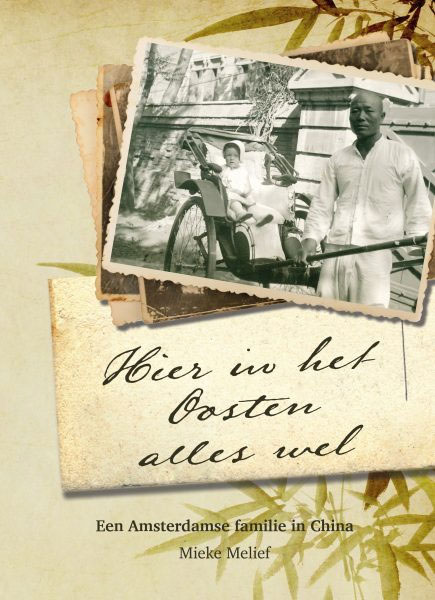
-by Annie deJongh
[excerpts] ...
[...]
 Many camp residents missed their house staff. Now they had to do everything themselves. In principle, everyone did as much work as possible for which he or she was trained or experienced. All professions were represented in the camp. Everyone had to improvise with faulty material and/or tools. Furthermore, water had to be pumped, heated and carried and the new supplies of food and coal delivered to the gates had to be brought to the kitchens and the warehouses. So the camp residents did everything themselves, including their own laundry. As we know, in the beginning the heavily polluted camp had to be cleaned. The prisoners took the rubbish outside the camp. The engineers dug drainage channels for the rainy season.
Many camp residents missed their house staff. Now they had to do everything themselves. In principle, everyone did as much work as possible for which he or she was trained or experienced. All professions were represented in the camp. Everyone had to improvise with faulty material and/or tools. Furthermore, water had to be pumped, heated and carried and the new supplies of food and coal delivered to the gates had to be brought to the kitchens and the warehouses. So the camp residents did everything themselves, including their own laundry. As we know, in the beginning the heavily polluted camp had to be cleaned. The prisoners took the rubbish outside the camp. The engineers dug drainage channels for the rainy season.
There was a lot of stealing, especially when food became scarce, and for that reason a disciplinary committee was set up. Punishments were handed out such as banning cooking in your room, house arrest, no more access to the library or other camp services, dismissal from a job. The punishments made little impression. Yet, given the circumstances, there was little crime. There was order and authority. Despite all the problems, the residents managed to run the camp with integrity.
[excerpts]
Although the camp hardships were relatively easy - the De Jongh family withdrew into the family circle, in the quiet block, with friendly families, Frans [being father of a numerous family — of 5 children + a newborn baby] — did not have to do the heavy work and had money to buy extra food every now and then. —
Camp life was very hard for many residents and some could not cope with the tension. There was no alcohol, no tobacco. Cigarettes were made from pine needles, leaves or tea. People smoked each other’s butts. By the way, tobacco was missed more than alcohol. Other inhabitants were frustrated and that sometimes led to violence. If there had been a stabbing the hospital staff would not report these wounded to the Japanese.
Several suicide attempts were made. A number of internees had been important or famous before the camp time and could not cope with the change. Suicide, however, was weird. A hospital employee, Mike Fox, who had been a renowned correspondent, tried to commit suicide with an overdose of morphine and aspirin. The internees blamed him for wasting the precious medicines. Another prisoner ate the cups of the matches from one box. She became seriously ill but survived. She had been a fashion model in America in the thirties and could not cope with the loss of all attention. A daughter of the most famous Madame in Beijing, who had become a star in the nightlife of that cosmopolitan city, slit her wrists, but not deep enough. Bobby Simmons also remembers these failed suicide attempts.
[excerpts]
Anneke was also happy to meet nuns from her old school who fulfilled all kinds of useful tasks.
The clergy had no family and immediately and unconditionally put themselves at the service of the community. They became indispensable in all the work that had to be done, especially in nursing, teaching, and caring for small children.
Because they had no children of their own, they were able to take over much of the care of the large families. Furthermore, they did the heavy work such as maintaining the water tower by pumping water. They baked bread, cooked and took care of the kitchens.
The religious also took care of maintaining the moral and mental health of the internees. Most of the orders were Catholic. The Scheutists were so enthusiastic that many Protestants were converted to the Catholic faith in the first months after the internment.
The Japanese thought it was all fine. Anneke says that people in distress ‘go to the Lord’.
Suddenly people became very pious and there was a lot of prayer. After all these years, she still feels some aversion to the already compelling pious reports of the American and English missionaries and the children of the Chefoo Inland Mission School on the Weihsien website.
Nice young fathers, who had always lived in monasteries, suddenly came to Weihsien, Shantung and became very popular. They sometimes had romances with beautiful young girls. Because of their direct contact with young women and their constant closeness they fell in love and vice versa. Thus Anneke remembers a certain father, a handsome Franciscan, with whom she moped up as a blossoming adolescent and with whom she was secretly in love. All sorts of barriers also fell away with the clergy.
[excerpts]
A well-known Lazarist was Father Verhoeven, who was very good at drawing and painting. He made numerous drawings and paintings of the buildings and grounds in the camp. He also drew an accurate map of Weihsien.
As no photographs were taken during the camp period, so Father Verhoeven’s pictures are very valuable to the former camp residents, their relatives, and those interested.
Unfortunately, most nuns and fathers had to leave the camp after six months. The internees were heartbroken, Anneke says. The nuncio, the diplomatic representative of the Vatican, issued a decree on behalf of the Pope, stating that the Catholic religious had renounced their own nationality by entering the monastery and going on missions. They were first and foremost Catholics and members of the Vatican; the Vatican City was thus their homeland. They no longer had allied nationality. The nuncio also contacted the Japanese about this and they judged that the Catholic monks were unjustly imprisoned. All of a sudden they all had to go back to the monasteries.
Presumably, the Pope feared that they would go to damnation in Weihsien because of the intensive contact with lay people. The Lazarists were then more or less locked up in a French convent in Beijing, which was located in the compound of the Bei Tang Church, the neo-Gothic Catholic cathedral of the Sacred Heart. They would stay here until 1945.
[excerpts]
The sewing workshop was very important, but sewing and adjusting clothes was more necessary than a recreational activity. Knitting and embroidery, however, were also ways to pass the time, as were woodcarving, drawing and painting. The internees had brought paint, watercolour, drawing ink and brushes with them. The woodcarving was ingenious and produced, for example, beautiful boxes, desk sets and chess games.
Most of the woodcarving was done in vegetable gardens for the production of food. A few, like Frans de Jongh, were engaged in the planting of flowers. It must have been a comforting occupation for Anneke and Wiesje. Planting something beautiful and seeing it coming out of the ground gave them hope for the future.
In the extremely harsh winter of 1944-1945, there was no more sport.
The vitality of the people was greatly reduced by the hardships. It was so cold that games were no longer held on the baseball field. The guards counted the people by the blocks. So they could immediately count the sick. The people who were absent because they worked in shifts also had to be counted. For example, they’d shout: “All out, twenty-one.”

[further reading]
http://weihsien-paintings.org/books/Hier_In_Het_Oosten_Alles_Wel/p_HierInHetOostenAllesWel.html
#








